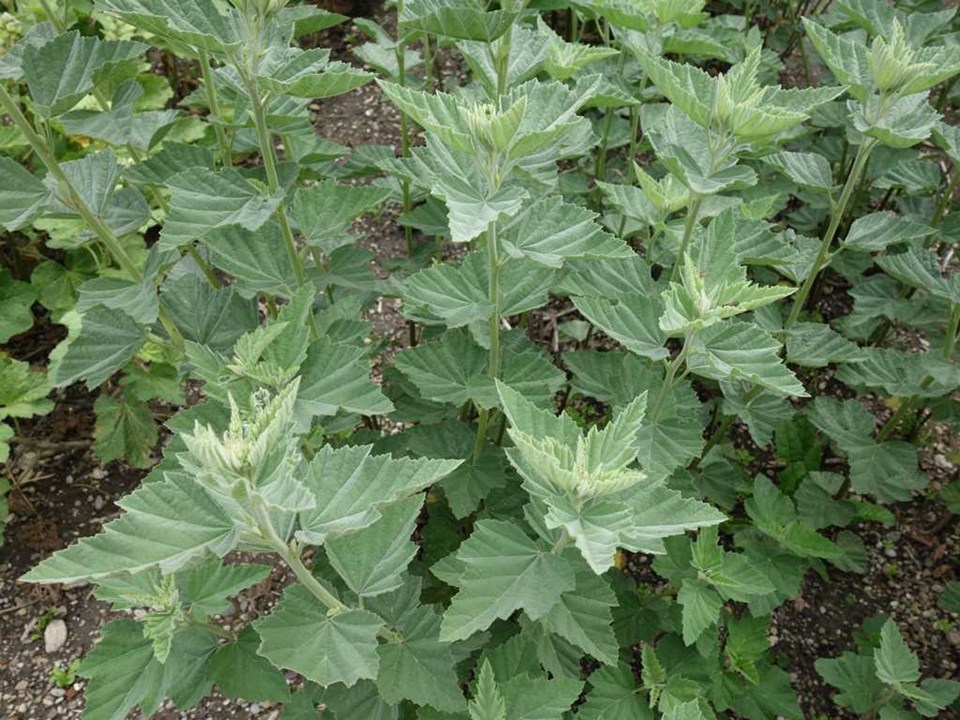Marsh mallow (Althaea officinalis)
Marsh mallow
Althaea officinalis, commonly called marsh mallow, is a herbaceous perennial native to ditches, streambanks, brackish wetlands, swamp margins, and other moist, disturbed areas in Europe and northern Africa. It is also grown as an ornamental and medicinal herb, and has escaped cultivation in parts of eastern Canada and the United States. Mature plants will reach up to 4′ tall with a 5′ spread (occasionally to 6′ tall and 4′ wide). The rigid, upright stems can be highly branched or unbranched depending on growing conditions. The leaves can vary in shape but tend to be ovate to cordate with toothed margins and 3-5 shallow lobes. The upper and lower surfaces of the leaves are covered in soft hairs giving them a velvety texture. The leaves can reach 4″ long and 75″ wide. The 5″ wide, pale pink flowers bloom singly or in small clusters in the leaf axils towards the tops of the stems from mid to late summer.
The genus name Althaea comes from the ancient Greek althaia meaning “healer”, in reference to the traditional medicinal uses of many members of this genus.
The specific epithet officinalis means “sold in shops”, which was applied to plants with real or supposed medicinal properties.
The common name marsh mallow refers to the preferred habitat of this plant and its placement in the Malvaceae (mallow) family.

Best grown moist, fertile soils in full sun. Tolerant of a wide range of soil types and brief periods of drought once established. Hardy in Zones 3-9.
| Hardiness zone | 3 - 9 |
| Sun light | Full sun |
| Water | Medium to wet |
| Maintenance | Low |
No major pest or disease problems. Watch for flea beetles and foliar rusts.
Best in herb gardens, vegetable gardens, cottage gardens, rain gardens, and other informal garden settings. All parts of this plant contain mucilage and can be used to thicken soups, stews, and other dishes. The roots and leaves have traditionally been used as an herbal remedy to sooth and reduce inflammation of the mucous membranes in the mouth, throat, and stomach. In ancient times, the roots were cooked with honey to create a sweet confection and medicine. These treats are the precursors of modern, commercially available marshmallows, although they no longer contain marsh mallow root extract.
| Common name | Marsh mallow |
| Botanical name | Althaea officinalis |
| Plant type | Herbaceous perennial |
| Family | Malvaceae |
| Hardiness zone | 3 - 9 |
| Water | Medium to wet |
| Maintenance | Low |
| Flower color | Pale pink |
| Flowering period | July - September |
| Height | 3 - 6 ft. |
| Width | 2.50 to 4 ft. |